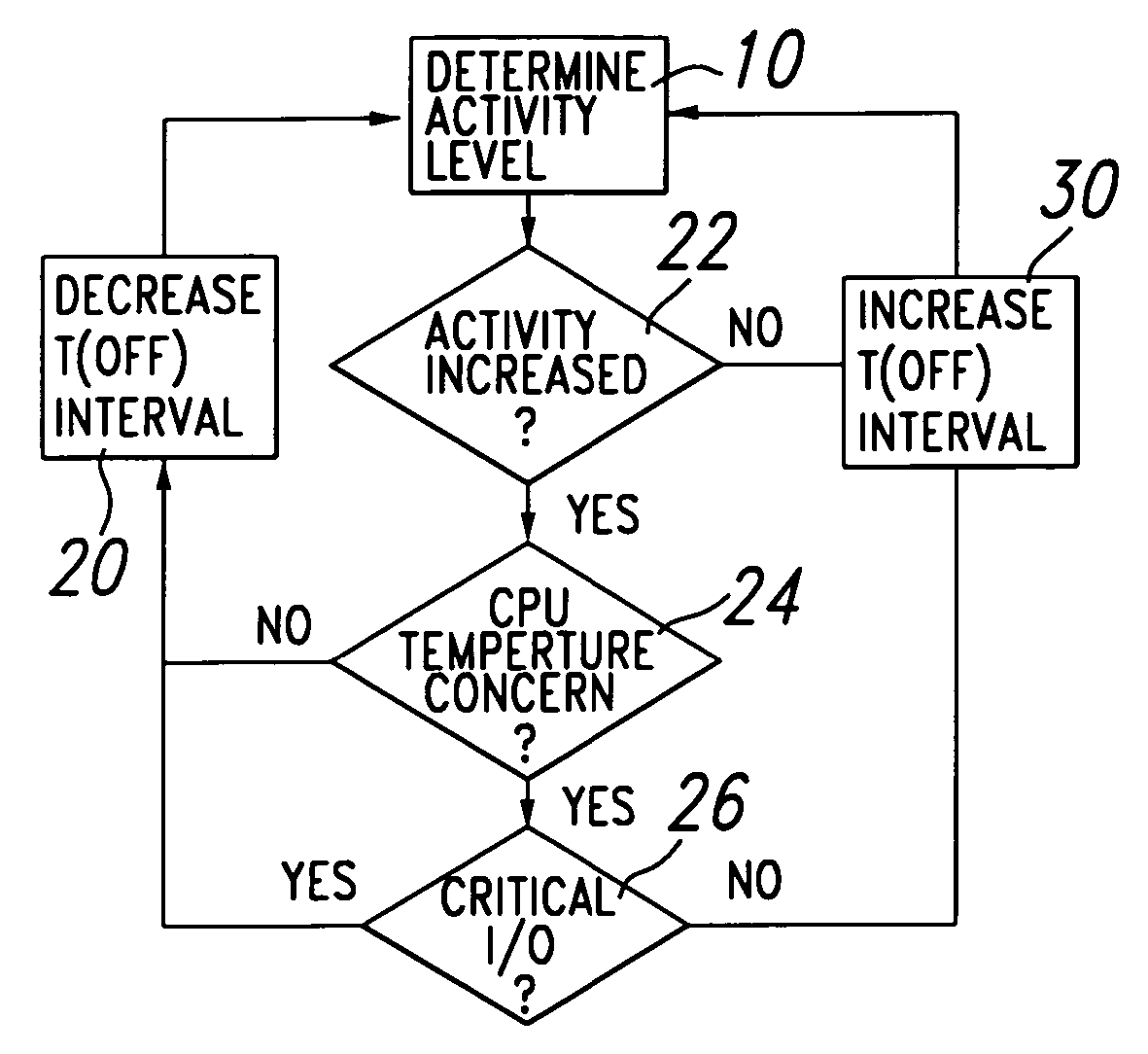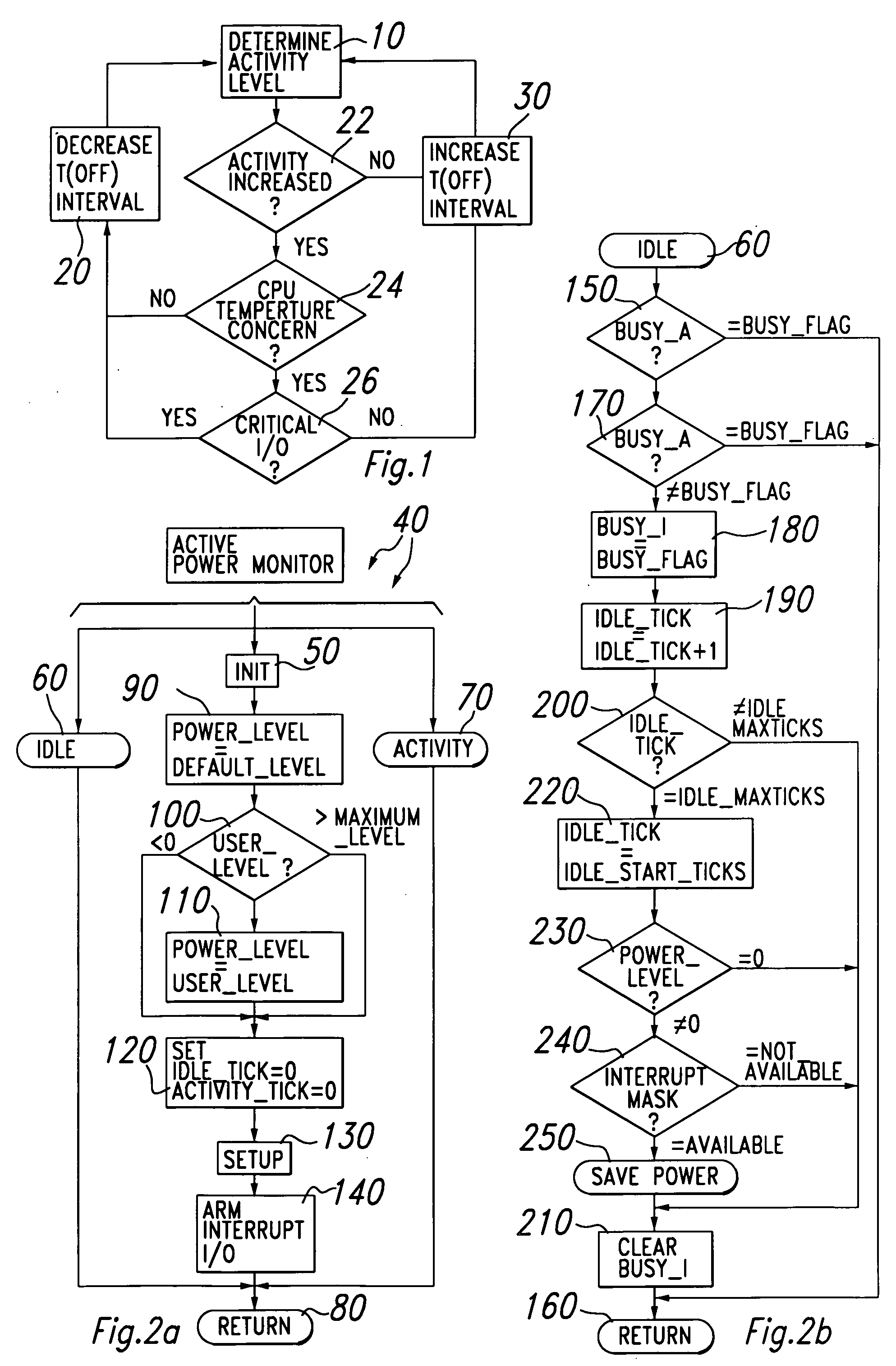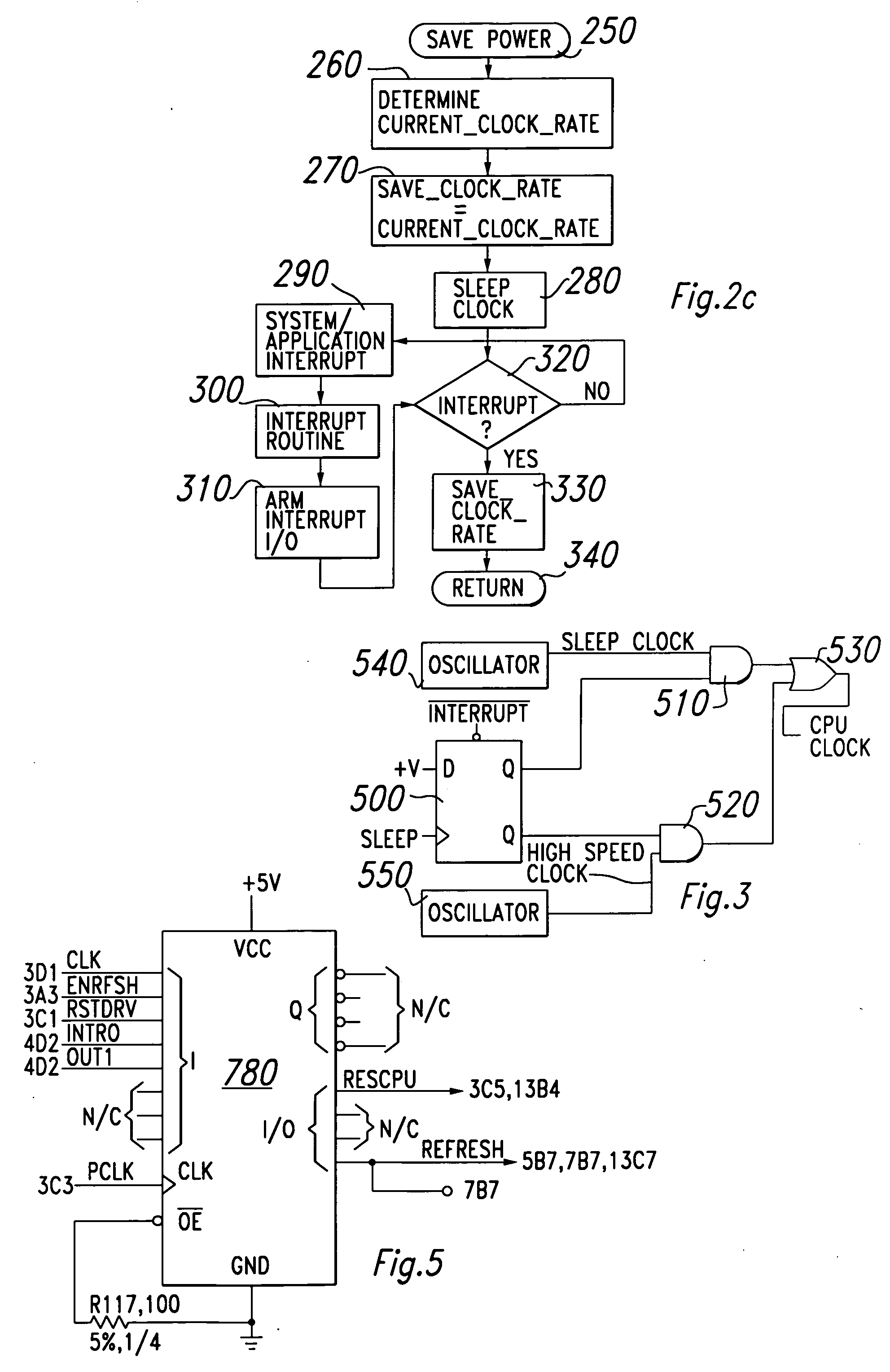Apparatus employing real-time power conservation and thermal management
a technology of real-time power conservation and computer, applied in climate sustainability, instruments, generating/distributing signals, etc., can solve the problems of heavy batteries still not running very long, portable computers continued to run only on a/c power, and expensive components were used to cut power requirements, etc., to reduce power consumption and cpu temperature, without affecting perceived performance, and without delay in computer operation
- Summary
- Abstract
- Description
- Claims
- Application Information
AI Technical Summary
Benefits of technology
Problems solved by technology
Method used
Image
Examples
Embodiment Construction
[0026] If the period of computer activity in any given system is examined, the CPU and associated components have a utilization percentage. If the user is inputting data from the keyboard, the time between keystrokes is very long in terms of CPU cycles. Many things can be accomplished by the computer during this time, such as printing a report. Even during the printing of a report, time is still available for additional operations such as background updating of a clock / calendar display. Even so, there is almost always spare time when the CPU is not being used. If the computer is turned off or slowed down during this spare time, then power consumption is obtained real-time. Such real-time power conservation extends battery operation life and lowers CPU temperature.
[0027] According to one embodiment of the present invention, to conserve power and lower CPU temperature under MS-DOS, as well as other operating systems such as OS / 2, XENIS, and those for Apple computers, requires a combi...
PUM
 Login to View More
Login to View More Abstract
Description
Claims
Application Information
 Login to View More
Login to View More - R&D
- Intellectual Property
- Life Sciences
- Materials
- Tech Scout
- Unparalleled Data Quality
- Higher Quality Content
- 60% Fewer Hallucinations
Browse by: Latest US Patents, China's latest patents, Technical Efficacy Thesaurus, Application Domain, Technology Topic, Popular Technical Reports.
© 2025 PatSnap. All rights reserved.Legal|Privacy policy|Modern Slavery Act Transparency Statement|Sitemap|About US| Contact US: help@patsnap.com



